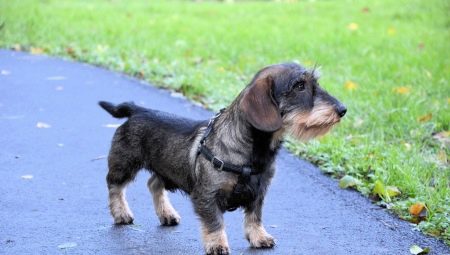For most dog breeders, the dachshund appears to be a squat, smooth-haired dog with a narrow long face and shortened legs. This is not surprising, because in fact dachshunds of this species are the most common in the world. But admirers also have more rare dachshunds, for example, wire-haired.
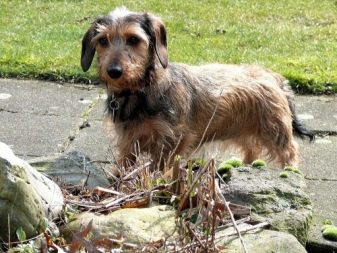
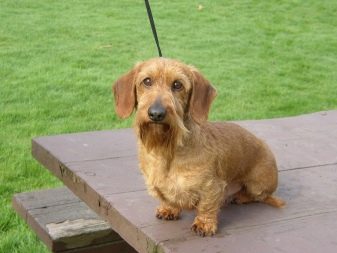
Origin
These are the same passionate hunters as representatives of the smooth-haired type. At the same time, unusual dachshunds with stiff hair have their own characteristics. And they relate not only to the quality of the coat, but also to all other aspects: origin, care, nutrition and education. Initially short-legged wire-haired dogs were used in Germany for hunting badgers.
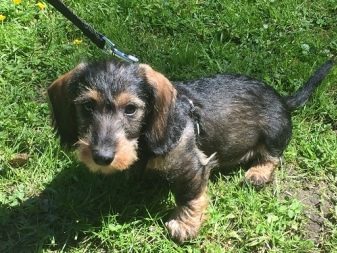
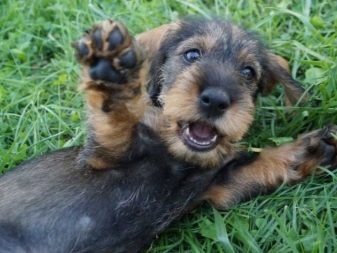
The short-haired dogs showed hunting qualities so successfully that breeders seriously engaged in improving the breed.
A thick thick coat helped during the hunt, protecting the dog's body from damage by dry branches and thorny bushes. Dachshunds were distinguished by courage, ingenuity and sneak. Ideal "scouts" who easily penetrate the narrowest animal holes.
In the process of breeding them crossed with dogs of different hunting breeds. For this, medium-sized individuals with thick wool were selected. The aim of the breeders was maintaining the composition of the dachshund with increasing aggression in character and improving the protective qualities of dense wool.

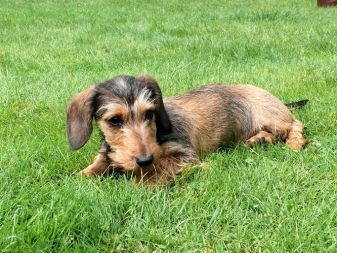
After a long selection and the most thorough rejection, we managed to deduce three of their varieties: classic dachshunds, rabbit and dwarf. A certain standard of a new wire-haired look was formed, which was officially recognized in Germany in 1915.
A new type of dog was brought to Russia after the victory in the Second World War, but wire-haired individuals did not gain popularity. Therefore, they are considered more rare representatives of this breed.

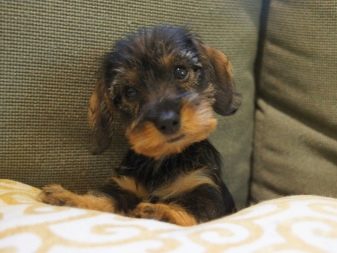
Description
Due to the unusual constitution of dogs with shortened limbs and a lean muscular body, dachshunds won the battle with strong rivals. Standard representatives of the breed are distinguished by a nice narrow muzzle with a powerful jaw. Females look more elegant, while not inferior to powerful males in their working qualities. Three varieties of breed differ in size.
- Wire-haired "standard" - The most common variety. The minimum height is 35 cm, the weight ranges from 7-9 kg.
- Dwarf. The weight of the dachshund is up to 5 kg with growth at the withers of 30-35 cm.
- Rabbit - the smallest variety. In growth, this rate does not exceed 30 cm, and the mass is not more than 2.5-3 kg.
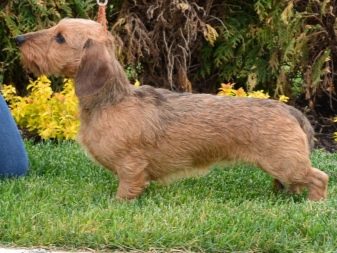
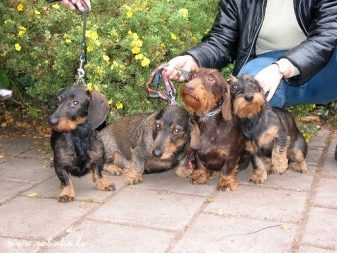
Before the intervention of breeders, the original purpose of the breed was hunting.
If the weight of the dachshund exceeds 10 kg, even with appropriate physical development, they will not be awarded the highest score due to unsuitability in the hunting sector. The standard-haired dachshund has a wedge-shaped head with a well-developed nape. The superciliary arches are barely noticeable, but are emphasized by thick eyebrows. On large and movable ears, the shape of the triangle ends are smoothed to a semicircle.
In this variety, the nose has a straight back, gradually narrowing to the lobe. On flattened cheekbones, muscles are well developed. Dry lips are medium in size. The mouth is deep, hiding tenacious strong teeth, the jaws are tightly closed.
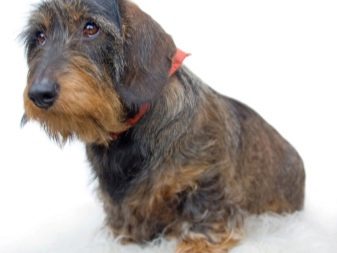
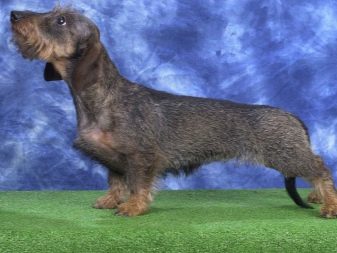
Black or brownish oval-shaped nose has well-developed nostrils.
The eyes are oval, with a deep brown iris. There are also individuals and with amber and blue eyes with a color of a fur coat under blue marble.
The body of the dachshund is very massive, elongated, with a muscular withers (noticeably developed in males). The neck of the individuals is distinguished by a developed scruff, and the chest is oval and elongated, but not wide. A falling or straight line of the back from the withers to the muscular croup. The lumbar region is elongated. The line of the abdomen is distinguished by fit and smoothness.
The limbs of these dogs are strong, with very developed joints. The front paws are parallel to each other, the upper part is pressed against the developed chest, and the wrists are visually curved, as they are located under the body. The hind legs of these dachshunds are set somewhat wider than the front. The tail is straight or bent by a “sickle”, set below the line of the back.
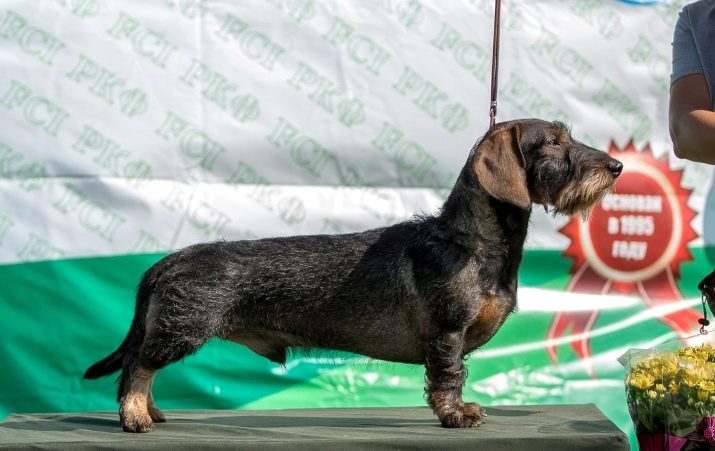
In an excited state, the tail rises, in a calm mood, the dog carries it freely.
Character
If you show the Dachshund a good attitude, the dog will certainly reciprocate. But to those who decide to offend her, the dog will fight back. In general, the dachshund is sociable and adores all members of the family, especially its owner.
These four-legged hunters are very active, if they are locked up, they will become sad. Dachshunds love hunting, harassing animals and all the fun of this category. If the owner does not hunt, still he must certainly provide the dog with the opportunity to frolic and run for a walk. If the dog is bored, he is able to direct his unspent energy into a "bad" channel.
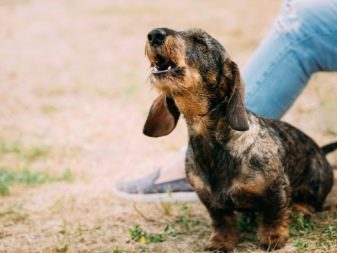
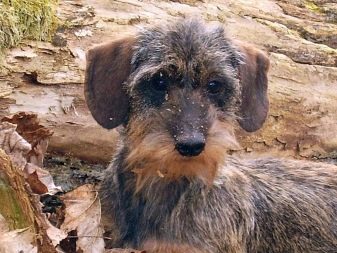
The dog knows how to adapt to the vital pace of households. This breed is simply ideal for all active people, although dog breeders with a measured lifestyle often prefer to get just dachshunds.
The dog accompanies the owner everywhere, with particular pleasure making joint morning runs, forays into the forest or city park. And if a long car ride is coming, a positive dachshund will gladly pack its way.
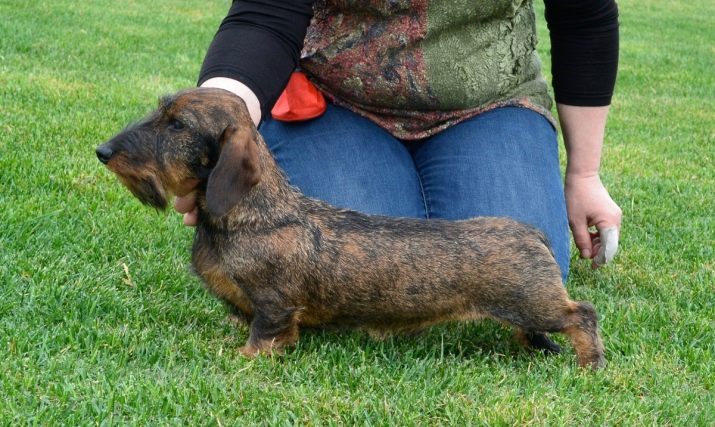
Dachshund is an excellent companion to its owner. These dogs are so cheerful that they infect others with their mood, raising their spirits with their enthusiasm. The energetic dachshund is friendly in nature, but we must not forget that in the soul it is a hunter, and, therefore, it is desirable to exclude the proximity to small animals.
Nature takes its toll, therefore Dachshund is not a place near cats, rodents and other animals. This must be taken into account, going on a dog walking. At any time, it can break at the sight of potential prey.
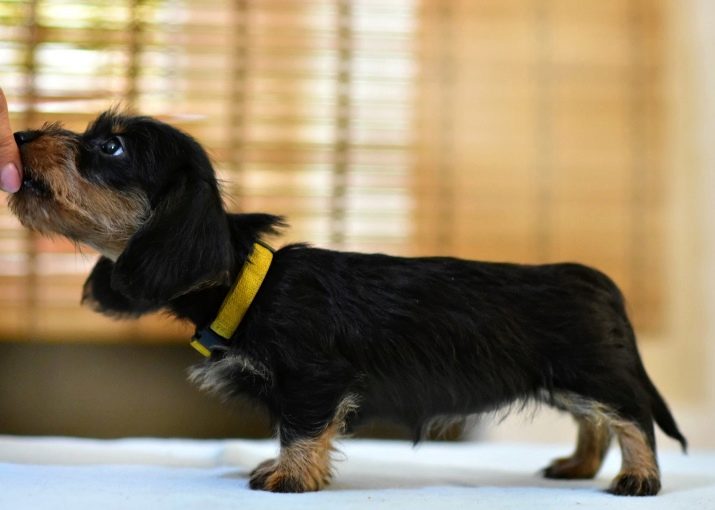
Types and color options
On the muzzle of dogs, the hair is elongated, forming a mustache, beard and expressive eyebrows. The dense "coat" is resistant to contamination.
Most often, representatives of this species demonstrate plain or two-tone color. But there are dogs tiger, marble, spotted, hare, boar, brownish brown coloring, as well as the color of pepper and salt. German red dachshund also has a different shade: from light orange to fawn. A miniature dog is most often monochrome: brown, black, reddish, sand or two-tone: black / brown with dark red tan. Less commonly - grayish with spots like tiger stripes.
Mini-hunters demonstrate one common quality for all species - Thickness and healthy shine of the coat.
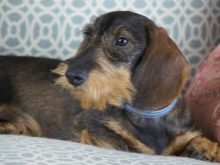
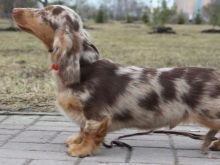
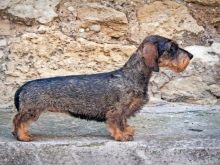
Wire-haired dachshunds have a developed thick undercoat.
How to choose a puppy?
Getting a puppy of a classic smooth-haired dachshund is not a problem today, because many breeders in nurseries are engaged in breeding this breed. But it is more difficult to acquire a wire-haired look, because so far it is a rarity. In Russia, you can contact specialized nurseries that breed this variety of dachshunds. There are not so many of them, so you have to be puzzled by the search for a certified seller, and often even book a pet for yourself and wait for the offspring to appear.
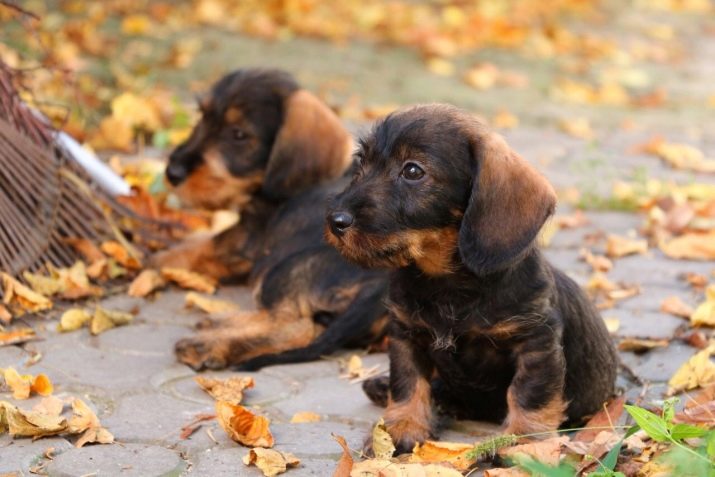
In cramped conditions, it is best to get a rabbit or a miniature dachshund, and in a spacious house, the larger wire-haired dog will also get along well.
If you want to have not just a pet, but also a dog with the potential of an exhibition winner, then the best option would be to purchase a puppy in a specialized nursery. This is the only way to be sure that the dog will be purebred, with all the accompanying genuine documents. Breeders in kennels show a serious approach to the process of breeding dogs.
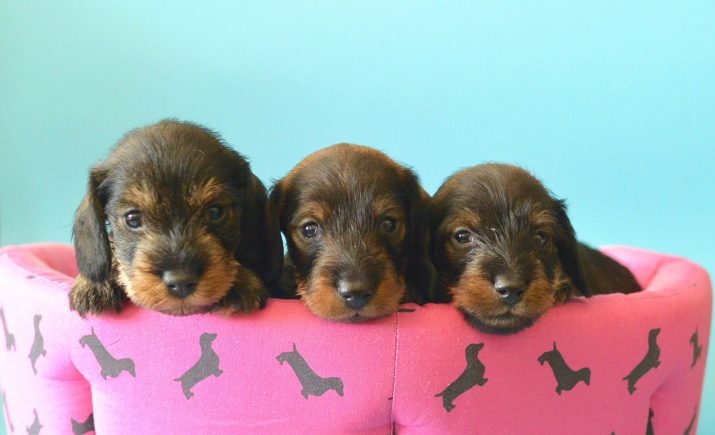
Sometimes for a descendant of titled ancestors with excellent standard indicators, a very large amount is voiced. If you take a puppy with you, but with a pedigree, you can count on the amount of about 20,000 rubles. A dog without documents will be much cheaper. But in this case, there is no question of any guarantees of the purebred origin of the pet.
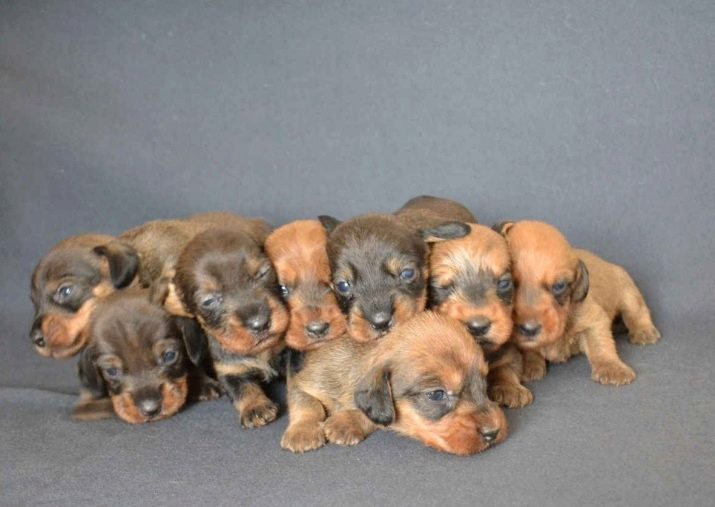
Buying a quality puppy from the breeder will cost at least 25,000 rubles (average price - 35,000 rubles).
How and what to feed?
Any puppy, no matter how much it was purchased, must be properly fed. Dachshunds do not belong to gourmets, but they need a balanced diet. In addition to a healthy diet, the dog needs a strict feeding regimen.
It is unacceptable to overfeed the dog, allowing him to eat as much as he pleases. This approach can lead to obesity of the animal and develop heart and spine diseases. For squat dogs, being overweight is very dangerous.

An adult dachshund is supposed to be fed twice a day. It is necessary to introduce such products into the diet:
- meat: boiled turkey or lean beef;
- boiled boneless sea fish;
- cereals: rice, buckwheat, oatmeal;
- boiled and raw vegetables;
- fruits;
- chopped fresh herbs (mixed in food).

It is forbidden to enter lard, pork meat, sausage, smoked meat, butter, chocolate and other desserts, everything baked, as well as boiled tubular bones in the pet's menu.
In addition, it is recommended to feed dachshunds 2 times a week raw eggs. The veterinarian may prescribe mineral supplements to the dog.The decision on their admission is made by a specialist for each individual individually.
The owner may also decide to feed the pet with finished industrial food - dry or canned. It is important to choose a super-premium or premium product suitable for small active dogs.
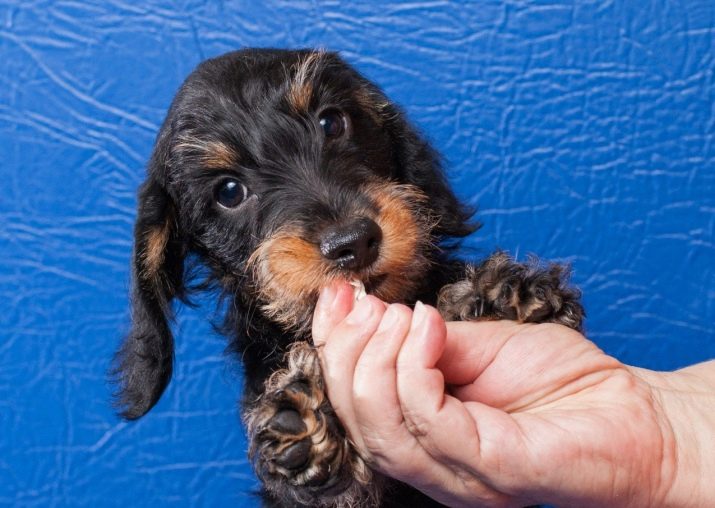
Conditions for keeping
A decorative dog should not become a fun, lively toy. This is a full-fledged dog that needs timely trimming and grooming, moderate exercise and a good attitude. Only then will the hunting dog turn into a true friend to its owners.
A dachshund with a thick, hard coat can live outside the house. It will not freeze in bad weather in a booth equipped and warmed for the winter. And although the modern burrow breed was originally intended for hunting, now it serves more as a companion to a person, therefore, needs to communicate with him, even if he lives in outdoor conditions. Alone, the dog begins to feel sad and loses all its natural enthusiasm.
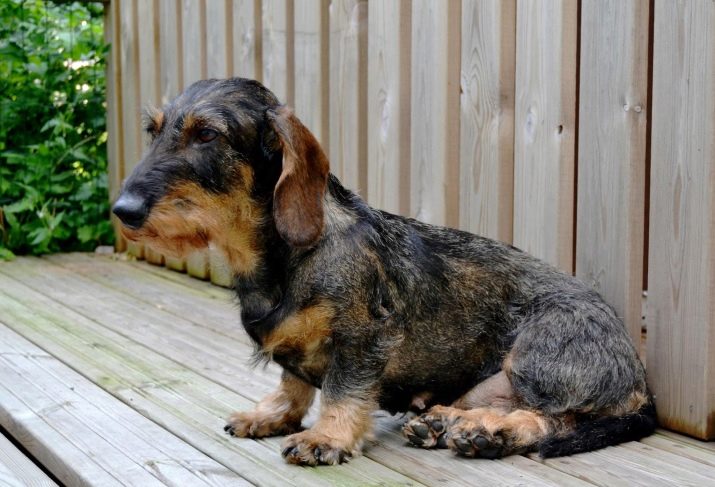
Dachshunds can be kept in an apartment and in a private house outside the city, where, of course, the dog will spend more time outdoors and frolic in spacious conditions. Although sometimes from such a frisky pet you have to protect the beds and flower beds. An active dog can "plow" the entire land. It is also worth worrying that the dog does not dig a dig and does not leave the site without the knowledge of the owner.
The wire-haired dachshund has a slightly disheveled coat, which requires particularly careful care.
Trimming
Like other dogs from the category of wire-haired, the dachshund periodically needs to be trimmed. This is a special procedure consisting in plucking dead hair. It is usually carried out in a zoological salon. But the owner is able to cope with the trimmer at home. Trimming a fee is recommended at least semiannually.
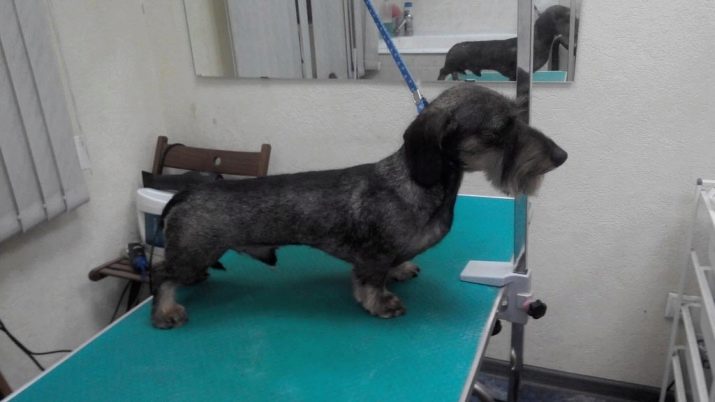
Grooming
You can only cut haircuts in places, making out a beard, mustache and eyebrows. Do not cut completely, due to the likelihood of damage to the structure of the coat. From the haircut, it will become soft. It is also worth considering such a feature in dachshunds with a hard coat, such as periodic baldness at the withers. This process is natural and should not bother the owners.

General care rules
Bathe the dog every three months using special detergents. Sometimes you have to brush your hair more often, because often dachshunds come from a walk pretty polluted. Affects their love of digging in the ground. In addition, dogs of this breed are lovers of rummaging through garbage.
The hanging ears of the dog also need regular cleaning. Veterinary pharmacies sell special ear care products. They are aimed at stopping the infection.
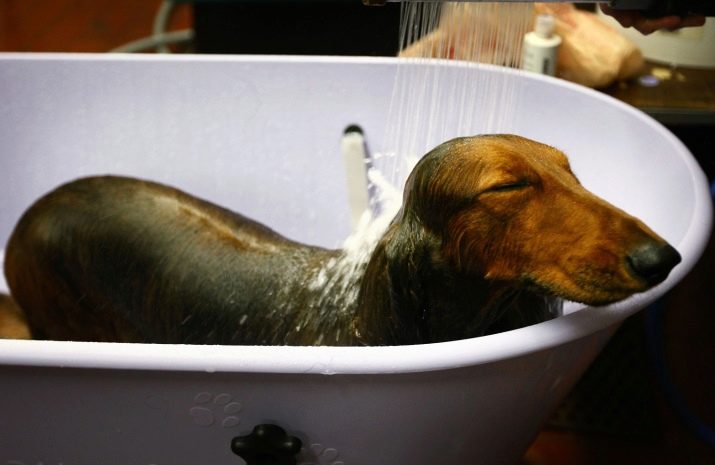
The claws of stiff-haired dachshunds are trimmed once every two to three weeks using a special claw cutter.
It’s also important for the eyes of the dachshund to pay attention and examine them regularly. If abundant tearing, redness, purulent discharge of the eye are detected, the dachshund must be washed. You need to use a clean cotton swab and boiled water and be sure to consult a veterinarian.
To exclude dental disease, they must be brushed twice a week.. For prevention, it is shown to give the dog special dentological toys and treats. Doggie brushing is carried out from an early age. A well-groomed pet will delight the owners with an excellent mood and a healthy appearance.
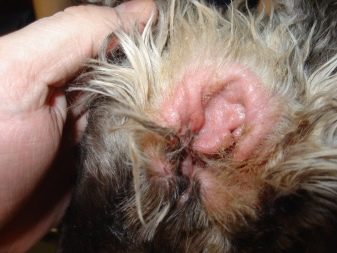
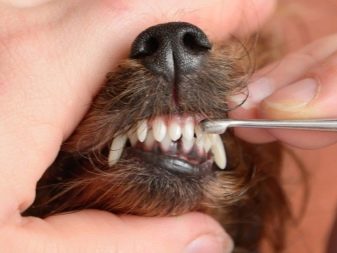
About the features of caring for dachshunds, see below.
